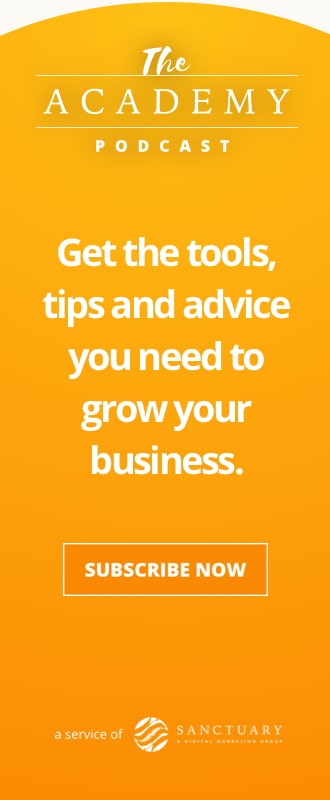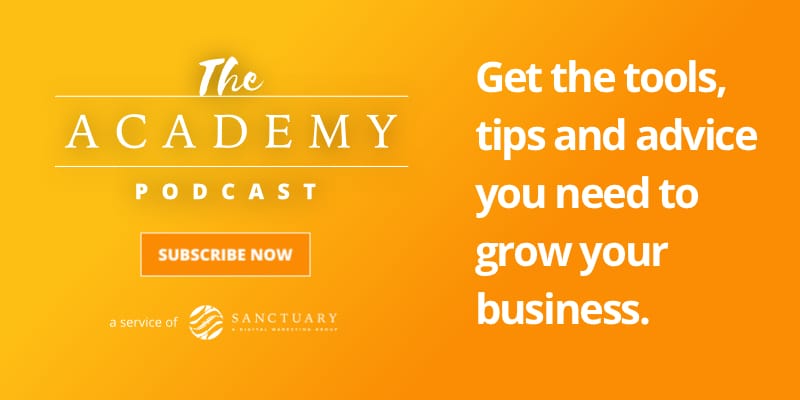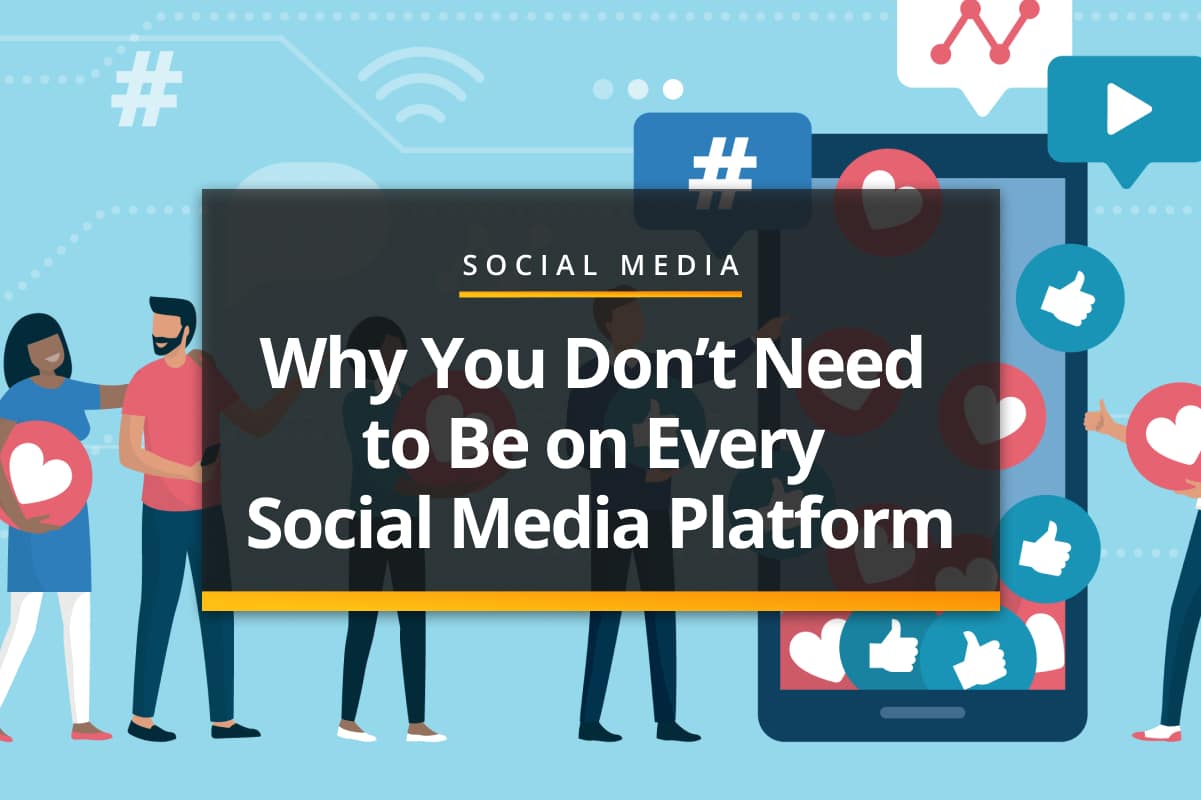
You’ve probably heard that your business “needs to be everywhere,” or you’ve been asked, “How are you not on [insert new social media platform here]?” This can be overwhelming and discouraging when you don’t have the time to invest in social media. It’s tough to watch your competitors post every day on every platform and feel like you’re not doing enough.
The good news? You don’t need to be on every social media platform to reach your target audience and grow your business. In fact, trying to be everywhere can actually harm your online presence and waste your time, often with little to no return on your investment.
So, how do you choose the right platforms, and what are the next steps once you do? In this post, we’ll show you the trap companies fall into, how to pick the right platform for your business, and how to grow those channels with intention.
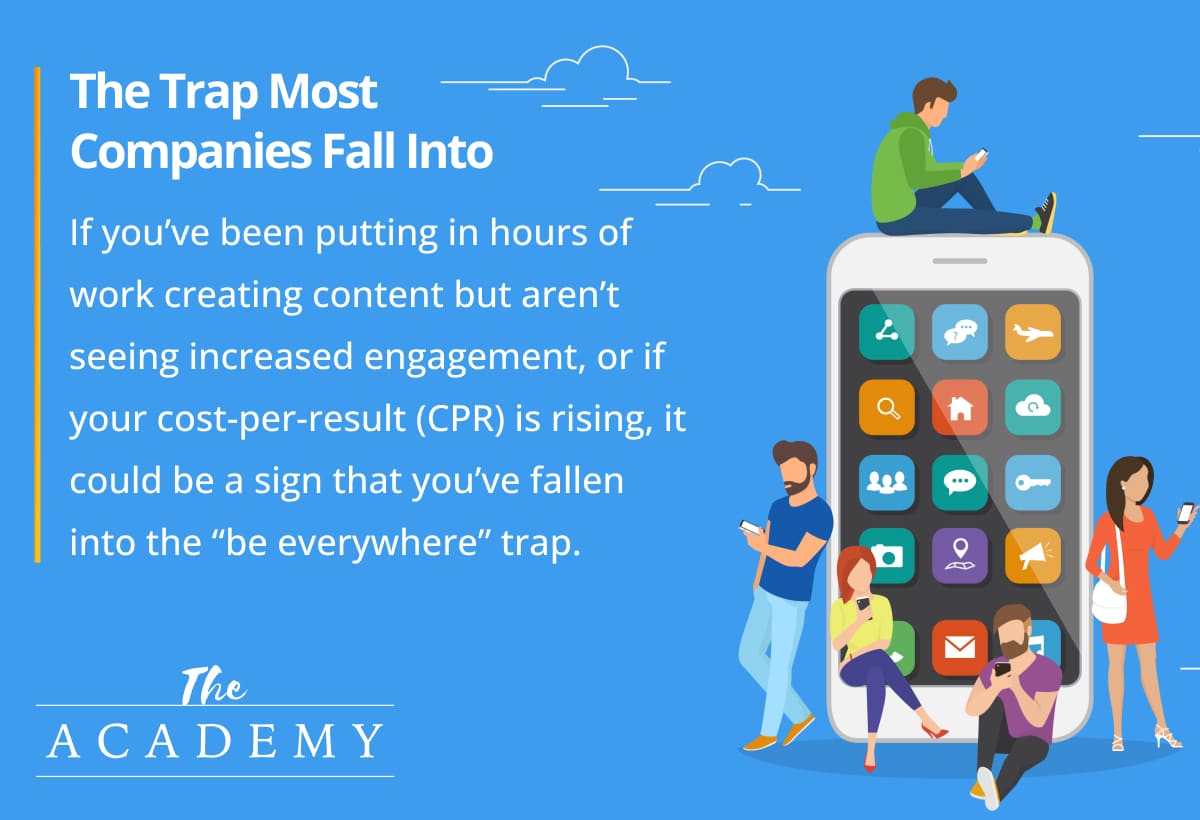
The Trap Most Companies Fall Into
The more social media channels you post on, the higher your chances of reaching your target audience and increasing engagement, right? Not necessarily. This is the trap many companies fall into and don’t realize it until it’s too late.
There are clear signs you’re spreading yourself too thin and putting in more effort than the results justify. Let’s take a deeper look at how to recognize if you’re on too many platforms:
- On average, businesses use 6–7 different social media platforms. This might work well for some companies. However, others may experience low engagement and stagnant growth as a result. Each platform is different and requires a unique strategy. If you treat them all the same, you risk missing out on meaningful engagement. Your audience may also sense that your messaging is generic or inconsistent, which can harm trust and interest.
- The best way to understand this trap? Scroll your phone. Open any social media app and you’ll quickly see content that resonates with you and a lot that doesn’t. Every day, users post an overwhelming amount of content. For example, Facebook alone has over 2.1 billion active daily users. That’s a lot of content competing for attention. It’s easy to get lost in the noise unless you’re intentional.
- If you’ve been putting in hours of work creating content but aren’t seeing increased engagement, or if your cost-per-result (CPR) is rising, it could be a sign that you’ve fallen into the “be everywhere” trap. The first step to getting out of it is to critically evaluate where you’re posting and what kind of content you’re sharing.
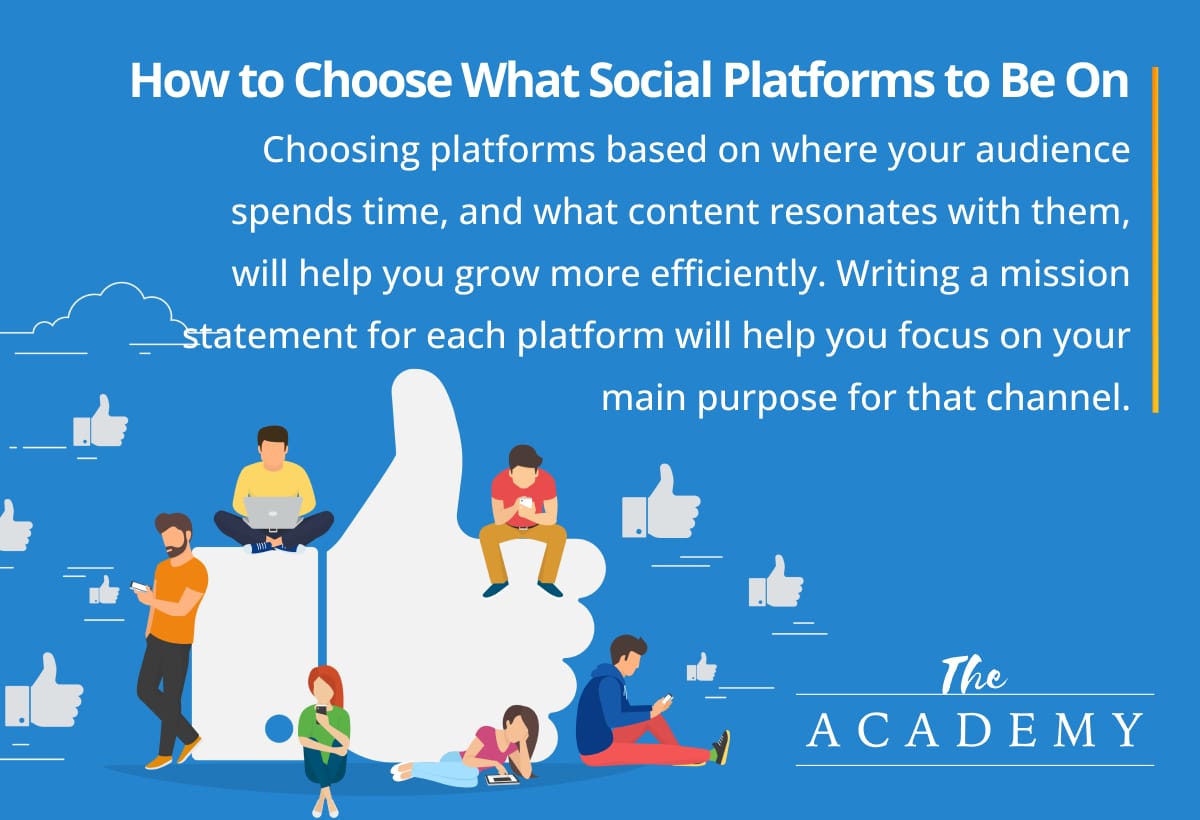
How to Choose What Social Platforms to Be On
Now that we understand the value of focusing on quality over quantity, let’s look at how to choose the right platforms. Remember: each social media channel deserves a distinct strategy tailored to its audience and format.
Here’s a quick (non-exhaustive) summary of the strengths and ideal use cases for each major social media platform:
- Instagram: Short form videos (entertaining or educational), images of people and products, carousel images that break down large topics.
- Facebook: Short form videos (leans towards educational), images of people and products, text posts that share brief updates and ideas.
- TikTok: Short form videos (leans towards entertainment)
- X (formerly Twitter): Text posts that are newsworthy and fast-paced
- LinkedIn: Long-form text posts that are focused on storytelling, short-form video (leans educational), blog posts
Seeing it laid out this way helps you recognize why sharing your latest blog post on Instagram may not perform as well as it would on LinkedIn. Choosing platforms based on where your audience spends time and what content resonates with them will help you grow more efficiently.
Once you have decided the platforms to have a presence on, you need to write out a mission statement. It may sound silly, but writing a detailed mission statement for each platform will help you focus on your main purpose for that channel. Here’s an example of a mission statement for Instagram:
“We will create engaging short-form videos and creative visuals that are either entertaining or educational. These pieces of content must offer valuable information and provide solutions for our audience.”
Notice that it doesn’t focus on what you get out of it—it’s about what your audience needs. That’s the mindset shift that will drive real results.
These mission statements are different from your overall business mission. Instead of outlining what you want to achieve, they clarify what you’re offering to the people who choose to follow and engage with your content.
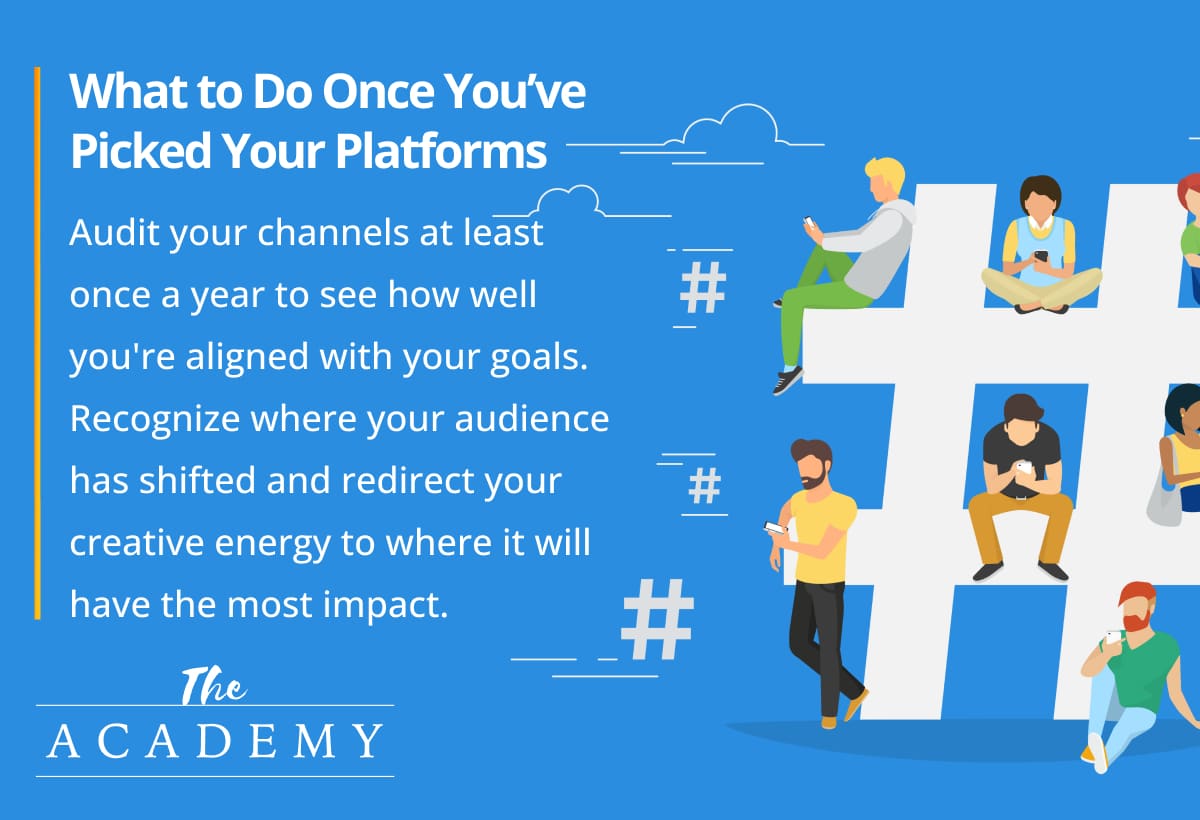
What to Do Once You’ve Picked Your Platforms
Now that you’ve carefully chosen your social platforms and written clear mission statements, it’s time to evaluate your progress. You should audit your channels at least once a year to see how well you’re staying aligned with your goals and where your audience is shifting.
A few specific metrics to track are:
- Engagement rate
- Impressions & Reach
- Follower growth rate
- Cost-per-impression (CPM)
- Cost-per-click (CPC)
- These metrics will help you determine which content types resonate most with your audience and which platforms are performing best.
Continue to create content specifically designed for each platform. You can repurpose and cross-promote your content, but make sure you’re “speaking the language” of each platform and posting consistently. Social media is constantly evolving, so staying adaptable is key. If this all feels overwhelming, that’s a sign you may need to scale back or bring in help.
Don’t be afraid to pivot. Here at Sanctuary, we’ve pivoted a few times in terms of what content we’re posting and where we are posting this content. Just recently, we decided to focus less on X and focus more on our other platforms. It’s not that X isn’t a valuable platform; it’s about recognizing where our audience has shifted and redirecting our creative energy to where it will have the most impact.
Choose Wisely
Stop chasing your competitors and start focusing on your audience. Trying to be on every platform can lead to creative burnout, inconsistency, and a lack of trust from your audience. Instead, choose your platforms intentionally, write clear mission statements, deliver valuable content, and stay consistent.
When you take this focused approach, you’ll gain time back on your calendar, see stronger engagement, and build deeper trust and loyalty with your customers.
Most Popular Articles

Seeing Favicons in Your Google Search Results? Here’s Why…
Have you noticed anything different in your Google Search results lately? Google added tiny favicon icons to its organic search results in January. It was…

Business Growth and Digital Marketing News & Tips 11-17-24
Are you encouraging and rewarding innovation? Lee Cockerell is the former Executive Vice President of Operations at Walt Disney World. A lover of traditional red…

Business Growth and Digital Marketing News & Tips 11-27-24
A culture of gratitude "Feeling gratitude and not expressing it is like wrapping a present and not giving it." – William Arthur Ward Beyond being…




